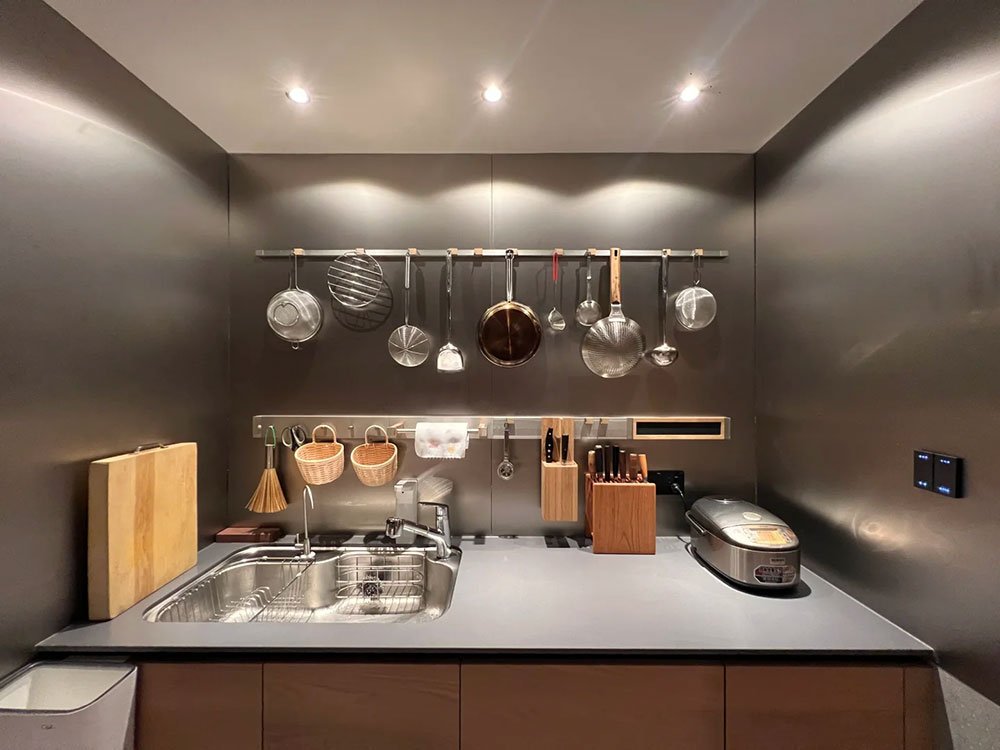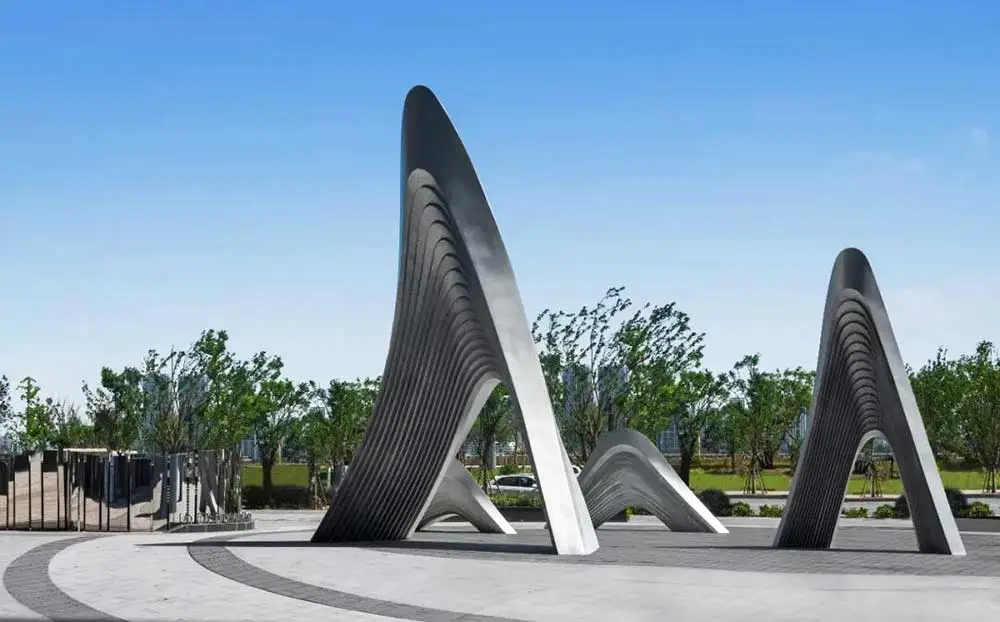Elevating Aesthetics and Functionality: Modern Trends in Elevator Cab Designs
Table of Contents
The elevator is no longer a vertical transportation system, an afterthought in building design, useful but utilitarian – a mere means to an end. It’s now an architectural feature of a building that says something about the personality and character of a building. The new style of elevator cabs design in today’s current design trends shatters the safety and efficiency paradigm. They are the convergence of design, technology, and engineering. An interior beautifully designed in an elevator is not only an enhancement to customer experience but also makes the facade of the building more beautiful. From metallic finishes to complex decorative panels, every decision conveys a specific message about the space that it will occupy.
The Art of Elevator Cab Designs in Modern Architecture
As the expressiveness and sophistication of buildings increased, so did the influence of elevator cab design on the character of the building. Today, the elevator cabin is a reflection of architectural fantasy – a place where light, matter, and form converge to deliver an overwhelming sensory and affective experience to the passengers.
How Elevator Cab Designs Define Spatial Experience
The minute one enters an elevator, one immediately senses the building’s design philosophy. Elevator cabin decorative panel configuration, lighting, and texture will influence an individual’s sense of perception, comfort, and safety. Gentle lighting and smooth texture can evoke openness within the enclosed space, while reflective surfaces like polished stainless steel or mirrors stretch the sense of the space. Textured or matte finishes on an elevator sheet metal, on the other hand, give a high-level, touch sense, with a feeling of stability and welcome. The best elevator cab designs wonderfully achieve having a better design in creating a slim vertical space into a pretty, memorable experience.
Integration of Material and Structure in Elevator Cab Panels
Interior paneling materials’ integrity and structure create the visual beauty and long-term strength of the cabin. Designers will usually combine stainless steel, titanium-plated plates, tempered glass, or laminates with high durability to ensure aesthetic presence as well as effectiveness in maintenance. For instance, stainless steel can add hardness and corrosion resistance, and glass panels with soft backlighting can add depth and ambiance. These pairs, when well designed, transform the interior cabin design of the elevator into a work of architecturally pleasing art, not solely beauty but also performance and safety.
Balancing Form and Function in Elevator Decoration
Elevator ornamentation today is all about achieving the balance between form and functionality. From the surface of the floor to the design of the ceiling in the elevator, every aspect is gorgeous and robust. Scratch-proof coatings, fire-resistant finishes, and acoustic sound panels must be provided for protection, but so do these indulgences provide comfort. Also, high-end trims, architectural lighting, and monochromatic walls make what would otherwise be an afterthought utilitarian a showpiece. Therefore, form and function exist in tandem with each other in an attempt to provide an environment as lovely as it is safe.



Exploring Elevator Interior Panels and Wall Systems
Interior panels of elevator cabs are the beauty canvas upon which designers translate the personality of a lift cabin. They define the atmosphere and build the décor – lean chic for the times, plush retro luxury, or industrial chic.
Choosing the Right Elevator Cab Interior Panels
The selection of appropriate elevator cab interior cladding panels involves artistic compromise as well as engineering pragmatism. In modern office skyscrapers, designers may employ brushed or etched stainless steel panels to provide a crisp, business-like appearance. For luxury apartments or hotels, however, bronze cladding or laminated rich-grained wood creates warmth and elegance. The use of elevator cover materials like titanium or copper provides tonal texture and depth. Each choice not only affects the appearance of the cabin but also what others perceive, whether passengers will ever feel royal, efficient, or comfortable in the elevator.
Elevator Wall Panel Replacement Cost Considerations
With time, elevator interior will gradually wear out with repeated use. When the replacements are required, it is necessary to monitor the cost of replacing elevator wall panels. Such costs include material, finish, customizations, and the complexity level in installation. For instance, replacing stainless steel panels will be less costly and simple compared to glass or natural stone surfaces. Embossed metal finish or LED-lit luxury versions cost money up front but pay their owners tenfold in the long term by amplifying loveliness. Products that last a long time pay their way countless times over in business life in decades of lower future maintenance, and the elevator looks just as lovely on day ten thousand as it did on day one.
Enhancing Functionality Through Elevator Wall and Ceiling Design
The ceiling and wall of the elevator contribute much more than appearance – they produce acoustics, lighting design, and passenger comfort. Refracting ceilings illuminate spaces, and glare is removed by the application of matte or textured walls. Strategically positioned light designed into the elevator ceiling optimizes visual clarity as well as ambiance. Advanced LED systems even adjust color temperature during the daytime to combat circadian rhythms to provide a calming experience. With every ceiling and every wall element becoming a system, designers create spaces intelligent, safe, and aesthetically pleasing.

Innovative Elevator Cab Design Ideas for Contemporary Spaces
Innovation, green mentality, and customization have propelled the evolution of elevator interior design ideas. Future architects always search for means through which to evolve elevator cabins from mere spaces of transit into design experience spaces.
Minimalist and Modern Elevator Design Concepts
Simplicity is also the hallmark of modern elevator interior design. Brushed metal finishes, clean colors, and indirect lighting provide a futuristic yet soothing appearance to cabins. Using elevator sheet metal with brushed, textured, or mirrored finishes gives designers the freedom to experiment with light and reflection. For business skyscrapers, such plain patterns emanate a perception of tech and professionalism, but for home skyscrapers, softer colors can be used to create a sense of warmth. The elegance of minimalism is not in emptiness but in meticulous choice of material to convey an image of purpose and precision.
Sustainable and Eco-Friendly Elevator Decoration Approaches
Sustainability has come to the fore concerning elevator design. Designers apply eco-certified material, recycled alloys, and low-VOC paint to minimize environmental impact. Energy-efficient lighting fixtures—headed by LEDs integrated into elevator cladding—consume less power without compromising on light or visual appeal. Modular parts enable rapid replacement, ensuring maximum product life and minimizing waste. With green building certifications such as LEED increasingly popular, sustainable elevator interiors are at once an indicator of visual sophistication and ecological responsibility.
Custom and Artistic Elevator Cab Design Ideas
The elevator cab design concepts become the epitome of creativity. Custom art panels, electronic displays, and laser-cut metals provide every elevator with a story to share. Digital glass walls or panoramic glass elevators in upscale complexes provide breathtaking views that raise user satisfaction. Interior design elevator concepts make short journeys into fun experiences. Aesthetic value can be achieved with even small quantities of material if well managed—texture tensions, contrast, and color gradations all offer depths of sophistication to create a lasting statement.

Functional Beauty: Elevator Cabs and Surfaces for Everyday Use
Where beauty endures, durability, comfort, and continued performance are the indicia of true design excellence. Elevator cabs and surfaces must deliver day-to-day contact, varying environmental conditions, and cleaning regimens—all without compromise to aesthetics.
Surface Durability and Maintenance in Elevator Cabs
Surfaces and materials used in elevator cabs are selected not only for their beauty but also for their durability. Stainless steel, tempered glass, and aluminum composite are market favorites due to their ease of maintenance and durability. Anti-fingerprint coating and nano-finishes are easy to clean, whereas scratch-resistant laminates are scratch-proof. Heavy-usage elevators in shopping malls or government buildings require surfaces that will shine for decades. Through the combination of design fantasy and advanced finishing technology, manufacturers render elevator interiors stylish even in the case of frequent usage.
Harmonizing Elevator Panel Design and Building Interiors
The design of the elevator panel must be as per the overall building’s architectural style. In a gallery of paintings, for example, the outside of the elevator can be clad with plain glass panels that replicate the sleek lines of the gallery itself, while in an upscale hotel, gold cladding is used to take the glamorous atmosphere of its lobby outwards. This homogeneity firms up visual continuity and is the brand of the building. Detailed attention—in the sense of coordinating wall color, floor texture, or lighting level—provides a seamless transition between the cabin and lobby so that passengers are exposed to continuity instead of contrast.
Smart Technology Integration in Elevator Design Interior
Contemporary elevator interior design nowadays increasingly involves incorporating intelligent systems in a bid to optimize user experience. Electronic signage, touchless call stations, and interactive screens advance sanitation and usability. Even some of the newer systems have integration with building automation networks, light and ambient music control according to building occupancy. Paired with stylish elevator interior panels, this kind of technology makes elevators not only functional but intelligent environments—so is the union of design and innovation defining modern architecture.
Conclusion
Elevator design, which started life as discreet mechanics, has come to be an integral component of building storytelling. With meticulous use of elevator cab panels, cutting-edge cladding, and innovative interior design principles, elevators now convey brand, technological superiority, and background space. As cities sprawl into the clouds, elevators ascend not just in altitude but in art – carrying on board works of imagination and engineering finesse. The future of taxi design for elevators lies in how they can incorporate smart technology, sustainable materials, and human-centered aesthetics which redefine each ride not only into a floor-to-floor trip, but an experience.
You Might Also Like
Please Share This
Recent Posts
- The Indispensable Role of Metal Decoration in Hotel Engineering
- Why Engineering Projects Need Professional Stainless Steel Customization
- Differences Between Indoor and Outdoor Metal Decoration and Material Selection
- Reinventing Urban Barriers with Stainless Steel Traffic Bollards
- Stainless Steel Road Bollards for Modern Urban Spaces



